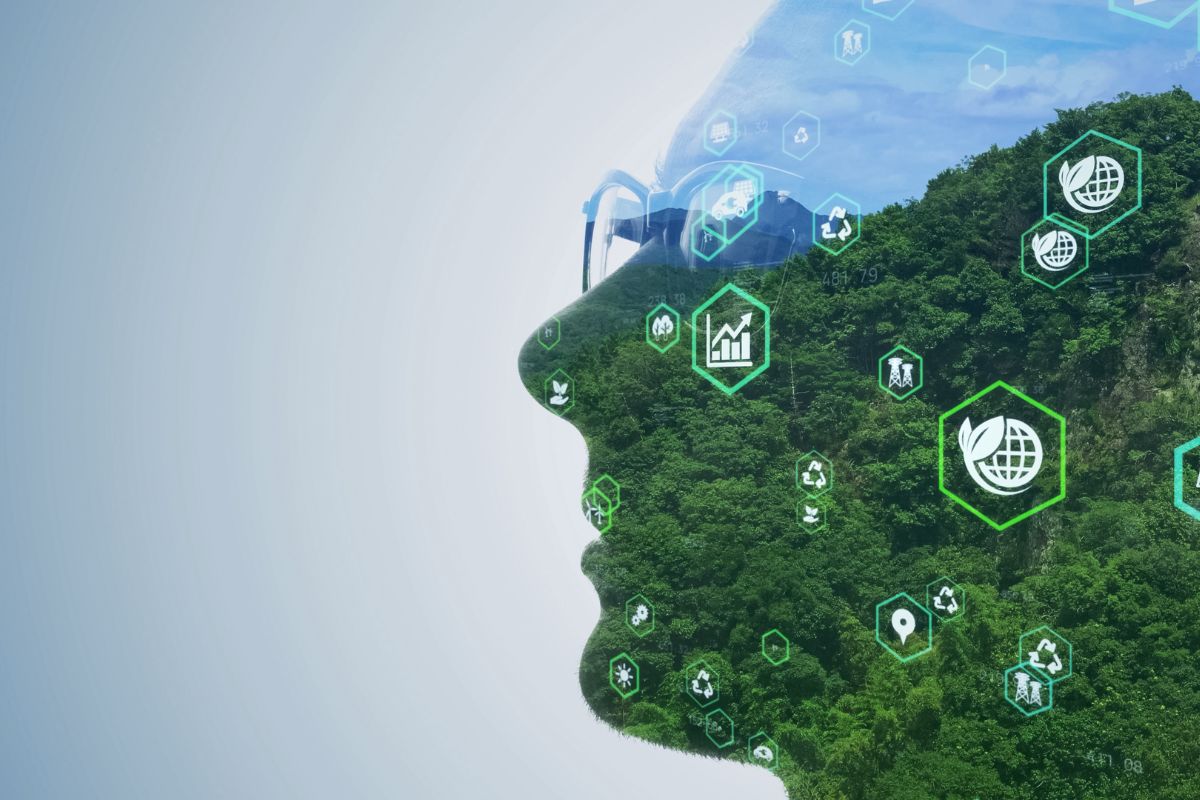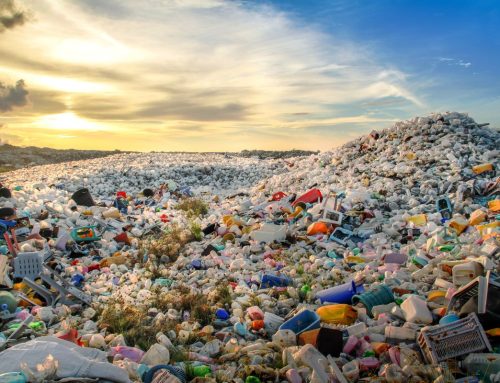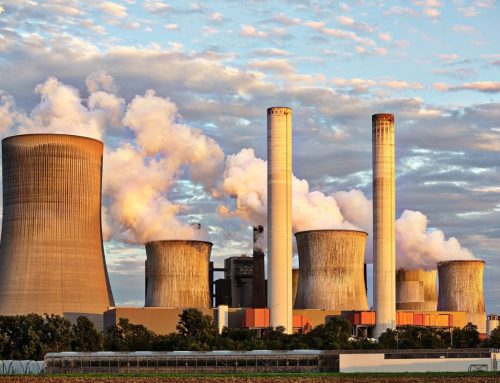What is an ecosystem?
Before knowing the definition of a sustainable ecosystem, we need to know what an ecosystem is. An ecosystem refers to a dynamic and interconnected community of living organisms (biotic factors) interacting with their physical environment (abiotic factors) within a specific area. It encompasses the relationships between living beings, such as plants, animals, microorganisms, and their surroundings, including soil, water, air, and climate. Ecosystems vary widely in size and complexity, ranging from a small pond or forest to entire landscapes like a desert or a coral reef.
Components of an ecosystem
Each component of an ecosystem plays a crucial role. Producers, like plants and some microorganisms, harness energy from sunlight through photosynthesis, converting it into organic matter and serving as the base of the food chain. Consumers, such as herbivores and carnivores, feed on these producers or other consumers. Decomposers, like fungi and bacteria, break down organic matter, returning nutrients to the soil for reuse by plants—a process vital for the ecosystem’s health.
Ecosystems have various biotic and abiotic factors that influence their structure and function. Biotic factors include living organisms and their interactions, while abiotic factors comprise non-living elements like sunlight, temperature, water, soil, and nutrients.
Human Impact on Ecosystems
The interactions within an ecosystem are intricate and interconnected. Changes in one component can have ripple effects throughout the entire system. For instance, alterations in climate patterns can impact plant growth, affecting the availability of food for herbivores, subsequently influencing the populations of carnivores relying on those herbivores.
Ecosystems provide essential services vital for life on Earth, including oxygen production, soil fertility, water purification, climate regulation, and nutrient cycling. Understanding and conserving ecosystems are crucial for maintaining biodiversity, ensuring sustainable resource use, and preserving the delicate balance of life on our planet.
What is a sustainable ecosystem
A sustainable ecosystem embodies a dynamic and intricate ecological system that can sustain its integrity, functions, and resilience over extended periods while ensuring the continuous support for life and natural processes within its boundaries. Achieving sustainability within an ecosystem necessitates a careful and strategic approach in handling its resources, biotic and abiotic interactions, and environmental components.
The concept of sustainability revolves around a principle of equilibrium, where human activities and ecosystem health coexist harmoniously. It involves implementing practices that meet the current needs of society without depleting or causing irreparable harm to essential resources or the ecosystem’s inherent capacity to regenerate itself.
Central to the idea of a sustainable ecosystem is the understanding that the actions taken within it should not compromise the prospects of future generations. It’s about striking a balance, whereby the utilization of resources, be it water, air, soil, or biodiversity, does not exhaust or impair these resources beyond their ability to replenish or regenerate naturally.

Type of ecosystems
Forests ecosystem
For instance, sustainable ecosystem management might involve practices that ensure forests are harvested at rates where new growth exceeds or matches the amount that is cut down. This approach allows the forest to regenerate and maintain its biodiversity, soil stability, and ability to absorb carbon dioxide.
Agriculture ecosystem
Similarly, in agriculture, sustainable practices aim to optimize crop yields while conserving soil fertility, minimizing chemical inputs, and preserving water resources to ensure the land remains productive for future generations.
Ultimately, a sustainable ecosystem requires a holistic perspective, integrating environmental, social, and economic considerations to maintain a healthy balance between human needs and the ecosystem’s ability to support life in perpetuity. This approach aims to safeguard the environment’s integrity, support biodiversity, and ensure the continued provision of ecosystem services vital for human well-being, now and in the future.
Key characteristics of a sustainable ecosystem include
-
Resilience
- A sustainable ecosystem exhibits robustness and resilience, enabling it to endure and rebound from various disturbances, whether caused by natural events like wildfires, floods, or human-induced activities such as deforestation or pollution. It possesses the capacity to adapt and recover while maintaining its essential functions, species diversity, and overall ecological structure.
-
Biodiversity Preservation
- Sustainable ecosystems prioritize biodiversity conservation. They harbor a rich array of species, ensuring genetic variability within populations and ecosystems. By safeguarding diverse habitats and species, these ecosystems support the survival of various organisms and maintain a balanced and healthy environment. Preserving biodiversity is fundamental to resilience and long-term stability within ecosystems.
-
Resource Efficiency
- Sustainable ecosystems manage resources efficiently and sustainably. They minimize waste generation and optimize resource use to ensure their regeneration or renewal. This involves responsible practices that prevent overexploitation of resources, such as sustainable fishing methods, prudent water management, and the promotion of renewable energy sources.
-
Ecosystem Services
- Sustainable ecosystems provide essential services vital for both human well-being and the ecosystem’s health. These services include the purification of air and water, soil fertility maintenance, pollination of crops, climate regulation through carbon sequestration, and nutrient cycling. These ecosystem services are indispensable for supporting life and maintaining ecological balance.
-
Balanced Interactions
- Sustainable ecosystems maintain harmonious interactions between biotic and abiotic components. This balance ensures that nutrient cycles, energy flows, and ecological processes operate smoothly and remain resilient. It involves a delicate equilibrium between living organisms, such as plants, animals, and microorganisms, and non-living elements like air, water, sunlight, and soil.
-
Conservation and Restoration
- Sustainable ecosystems emphasize conservation efforts to protect natural habitats, endangered species, and overall biodiversity. They also prioritize restoration activities aimed at recovering and rehabilitating degraded ecosystems. Restoration involves initiatives like reforestation, wetland rehabilitation, and creating wildlife corridors to reconnect fragmented habitats.
-
Community Engagement
- Sustainable ecosystems require active participation, cooperation, and engagement from local communities, stakeholders, policymakers, and individuals reliant on these ecosystems. Engaging these groups fosters a sense of responsibility and ownership, leading to better-informed decisions and effective implementation of sustainable practices.
-
Adaptive Management
- Sustainable ecosystems employ adaptive management strategies that involve ongoing monitoring, assessment, and adjustment of practices. This adaptive approach is responsive to new scientific knowledge, changing environmental conditions, and socio-economic factors. It ensures that management practices evolve and adapt to sustain the ecosystem’s long-term health and functionality.
-
Eco-friendly Technology Integration
- Sustainable ecosystems integrate innovative and environmentally friendly technologies to minimize ecological footprints. This includes employing green infrastructure, utilizing renewable energy sources, and implementing eco-efficient systems in industries to reduce environmental impacts.
-
Soil Health and Conservation
- Sustainable ecosystems focus on maintaining soil health through practices like minimal tillage, erosion control, organic farming, and composting. By preserving soil structure and fertility, these practices sustain agricultural productivity while preventing soil degradation.
-
Urban Planning for Sustainability
- Sustainable ecosystems incorporate urban planning strategies that promote green spaces, reduce urban heat islands, and optimize resource utilization in cities. This includes designing sustainable transportation systems, green rooftops, and urban gardens to enhance biodiversity and improve urban resilience.
-
Ethical and Equitable Resource Distribution
- Sustainable ecosystems prioritize fair and ethical distribution of resources, ensuring access to clean water, food, and shelter for all community members. This involves addressing social disparities, promoting equitable resource allocation, and fostering community resilience in the face of environmental challenges.
-
Sustainable Tourism and Recreation
- Sustainable ecosystems encourage responsible tourism practices that minimize negative impacts on natural areas. This includes promoting eco-tourism, establishing visitor guidelines, and educating tourists about conservation efforts, preserving the integrity of ecosystems and local cultures while providing economic benefits to communities.
-
Climate Change Adaptation
- Sustainable ecosystems actively adapt to and mitigate the effects of climate change. They implement measures to enhance resilience against climate-related challenges, such as extreme weather events, sea-level rise, and temperature fluctuations. Adaptive strategies include fostering climate-resilient species, restoring coastal habitats like mangroves to buffer against storm surges, and implementing water management techniques to combat droughts.
-
Long-Term Planning and Policy Frameworks
- Sustainable ecosystems are supported by comprehensive long-term planning and robust policy frameworks. These strategies aim to integrate sustainable practices into governance, land-use planning, and resource management. They prioritize conservation, restoration, and sustainable development while engaging stakeholders and communities in decision-making processes to ensure a holistic approach to ecosystem management.
Why a Sustainable Ecosystem Matters
Biodiversity Preservation
Sustainable ecosystems harbor diverse species, crucial for maintaining ecological balance, resilience to environmental changes, and ensuring the provision of essential ecosystem services like pollination, soil fertility, and nutrient cycling.
Supporting Life Systems
Ecosystems provide essential resources such as clean air, water, food, and raw materials necessary for human survival and economic activities. They also regulate climate, control diseases, and offer cultural and recreational benefits.
Resilience and Adaptability
Sustainable ecosystems exhibit resilience, which enables them to recover from disturbances and adapt to changing conditions, maintaining their functions and services for future generations.
Economic and Social Benefits
Healthy ecosystems contribute to economic growth through sectors like agriculture, fisheries, tourism, and pharmaceuticals. Moreover, they foster community resilience, cultural practices, and well-being.
Climate Change Mitigation
Ecosystems play a critical role in mitigating climate change by sequestering carbon dioxide, regulating temperatures, and reducing the impacts of extreme weather events.
Introduction to Roll’eat
Roll’eat is a brand committed to sustainability by offering reusable, eco-friendly alternatives to single-use items. Our products, such as reusable food wraps or snack bags aim to reduce waste generation and promote a more sustainable lifestyle. By encouraging the use of reusable products, we contribute to minimizing plastic pollution and encourage environmentally conscious consumer habits.
Roll’eat’s innovative products, designed for practicality and convenience, align with the principles of sustainability by reducing the reliance on disposable items and encouraging a shift towards reusable, environmentally friendly alternatives. These products enable individuals to contribute positively to environmental conservation by making small yet impactful changes in their daily habits.
By adopting our products like the reusable food wraps and snack bags, you can actively participate in reducing single-use plastic waste, thereby supporting the larger goal of building sustainable ecosystems and a healthier planet.










